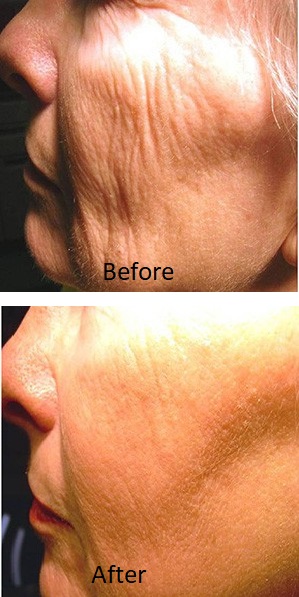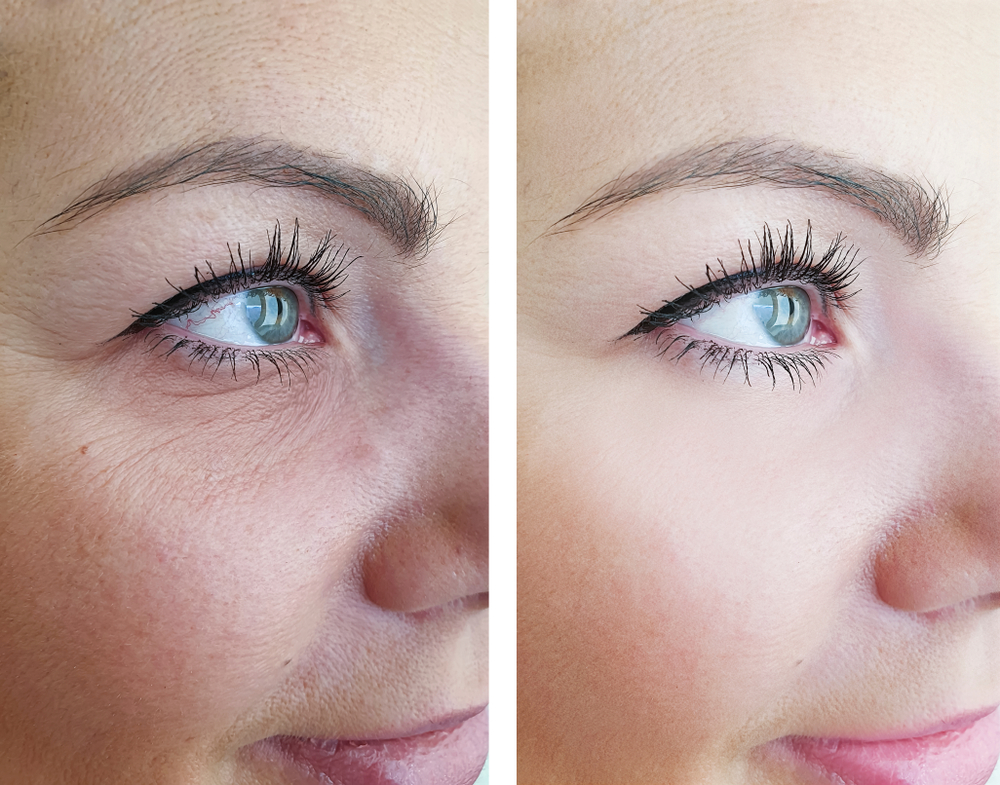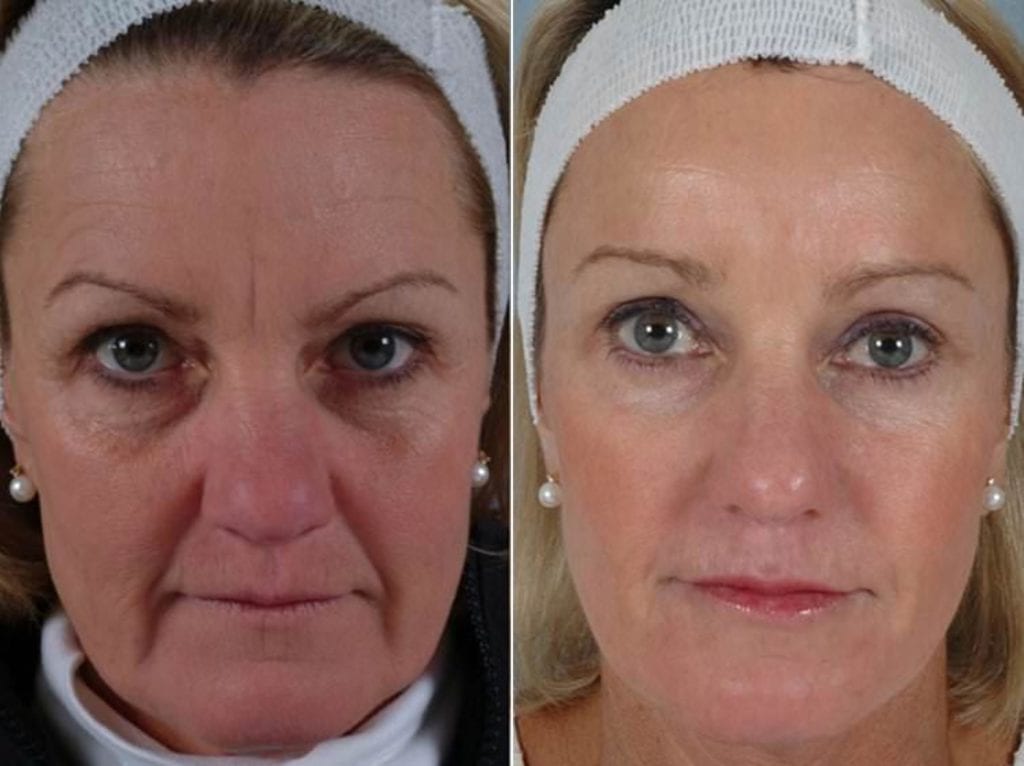ERBIUM LASER SKIN RESURFACING
What is Erbium?
Erbium:YAG uses a 2940nm wavelength for skin resurfacing. The Erbium:YAG on the Spectrum is fully ablative and customizable, having the ability to resurface skin from 10 to 100 microns.
What is unique about Erbium?
Because water is such a critical component in the epidermal and dermal tissue, the 2940 nm wavelength produced by Erbium:YAG lasers is capable of rapidly vaporizing water residing in the skin. This unique wavelength delivers an almost instant skin ablation while limiting heat damage in the surrounding area. Unlike CO2, Erbium is a more superficial skin resurfacing tool for polishing the skin. The Erbium:YAG laser is capable of achieving superior resurfacing results, while offering many advantages to the patient, e.g., reduced anesthetic requirements, shorter healing time, reduced erythema, less risk of pigmentary change, and more flexibility for facial skin resurfacing.

What does it do?
Erbium:YAG laser skin resurfacing is an effective technique for minimally invasive and effective management of many cutaneous conditions and lesions. Its main indications include treatment of photoaging, rhytids, wrinkles, and solitary benign and malignant cutaneous lesions.
Expectations Following Treatment
Mild erythema (redness) will be present in the treatment area and can last from a few hours up to a few days. Treatment areas almost always become erythematous. Immediately following the procedure, patients will experience a mild sunburn sensation that may include some mild discomfort. Most patients do not feel any significant discomfort, however, an ice pack (not direct ice) maybe applied to help soothe areas with discomfort. A cooling lotion or soothing gel may be used after Erbium Yag treatments.
General Skincare
Proper skin care is important to protect the new refreshed skin. Your physician will discuss a proper skincare regimen following your Erbium Yag treatment.
- Clean the treated area daily with a mild cleanser. Apply a thin layer of mild moisturizer to the area several times a day until evidence of dryness, blistering or swelling has dissipated.
- Shower as usual but be aware that the treated area may be a little temperature sensitive.
- Avoid chlorine, hot tubs and swimming pools during the treatment program.
- Avoid direct contact in the sun during your treatment program. Always use a topical sun protection of SPF 30.
- Avoid the use of exfoliants, loofah sponges and aggressive scrubbing to the treated areas.
Precautions:
- Avoid exposure to the sun and tanning beds for 30 days prior to the treatment.
- Do not rub, scratch or pick at the treated area. Treat the area gently. Pat skin dry after bathing or showering. An antibiotic ointment such as Bacitracin may be applied. Neosporin and Polysporin are not recommended.
- Makeup may be applied over the treated area 24 hours after the treatment
- Avoid shaving the treated area for 48-hours after the procedure.
- If patients have any questions, please call our office.
ERBIUM YAG PRE-TREATMENT INSTRUCTIONS
BEFORE THE TREATMENT:
- Discuss and disclose any healing disorders such as caused by diabetes mellitus, connective tissue disease or radiation/ chemotherapy.
- Discuss and disclose if there is an active infection or history of herpes simplex of the lips, mouth or face.
- Do not proceed with the Erbium Yag treatment if the patient is pregnant or breast feeding.
- Discuss and disclose allergies to topical anesthetics, antibiotics, or other medications.
- Do not proceed with the treatment if Isotretinoin (Accutane) has been used within the past 12.
- Discuss the history of any hypertrophic scarring or keloid formations or other skin diseases.


BEFORE FOLLOW-UP TREATMENTS:
- Disclose any new medications you may begin using during your treatment program.
- Treatments cannot be performed on areas with a suntan or sunburn. Avoid direct exposure to the sun, tanning beds 4 weeks prior to treatment. A broad-spectrum sunscreen of SPF 30 or higher should be applied to any treatment area exposed to the sun.
Treatment Information

Pre-treatment
Cannot be performed on tanned skin, please stay out of the sun. Avoid direct exposure to the sun / tanning beds 4 weeks prior to treatment. Wear broad spectrum SPF, pretreat if prone to cold sores.
Post-treatment
Clean the skin with a gentle cleanser and apply recovery balm several times a day until evidence of dryness, blistering, or swelling has disappeared. Can be a little temperature sensitive. Avoid exfoliants, scrubbing, chlorine, hot tubs, and swimming pools while healing.
ERBIUM LASER SKIN RESURFACING FAQS
Ablative and non-ablative Erbium laser resurfacing stimulate collagen reorganization and fibroblast activation in photoaged skin. Ablative resurfacing, as on the Spectrum laser, will yield more significant results in a shorter period of time.
Topical numbing cream is typically used to help mitigate any discomfort. Mild erythema (redness) can last a few hours up to a few days depending on the severity of the treatment. Mild sunburn sensation that may include some mild discomfort may persist for up to 24-48 hours. Patients may use ice to sooth areas of discomfort. A few days after mild peeling of the skin will begin, do not pick.
Average treatment takes approximately 20 minutes.
The top layer of skin will re-grow and can be covered with makeup within about one week, at which time you will see noticeable improvements in your skin’s texture, tone, and wrinkle appearance. Deeper laser treatments also stimulate the growth of new collagen over the next four to six months.
Use soft cloth and soft towels to avoid any scrubbing. When showering, avoid getting shampoo directly on the treated area. Avoid strenuous exercise and sweating until after skin has healed.

Don't take our word for it

Elizabeth

Joanne Douglas

Iman Alahdel

Deirdre M

Antonia Bencosme

